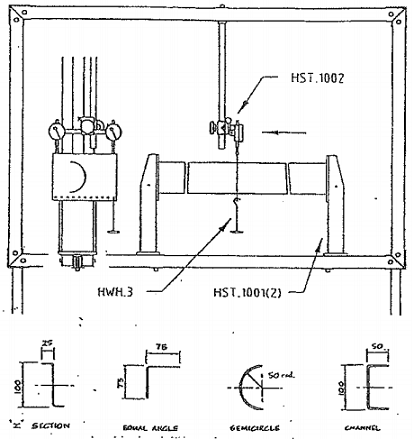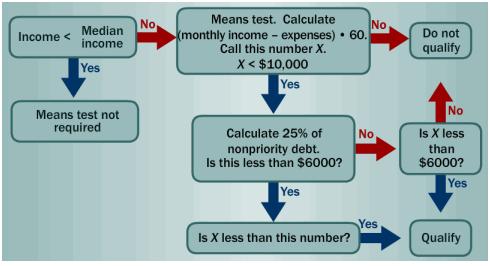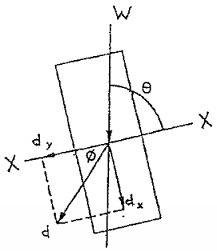Reference no: EM131194364
PART I - STRUCTURAL ENGINEERING: SHEAR CENTRE DETERMINATION

APPARATUS-
The shear centre specimens are constructed from 16SWG (1.63 mm thickness) sheet steel with welded-on end plates perpendicular to the beam longitudinal axis. At the mid-span of each beam a transverse loading plate is rigidly fixed so that a load hanger can be hung in a series of holes which are at different transverse eccentricities relative to the beam section. Two end support brackets enable the test specimen to be set up as a fixed beam. A bracket carries two dial gauges, with toilers instead of anvils, to register the displacement of the top edge of the transverse loading plate. The experimental arrangement eliminates warping of the specimens as they bend and rotate about a longitudinal axis.
OBJECT-
The object of the experiment is to find the shear centre of a selection of beam cross-sections. The four provided are a channel, a semi-circle, an equal angle and a zed.
PROCEDURE-
By using two dial gauges to measure the vertical displacement of each top corner of the central loading plate it is possible to derive the rotation of the plate in its own plane as the load is applied at different eccentricities to the centroid of each section. The 'no load' readings should be taken without the load hanger in place.
For each of the four sections in turn record the front and rear dial gauge readings as a fixed load plus the hanger is applied at the eleven positions across the loading plane. Use 40N for the equal angle and 100N for the other sections. Note the relation of the load position to the vertical part of each section.
RESULTS-
The twisting of the beam can be evaluated in terms of the tilt of the transverse plate over the 200mm separating the two dial gauges. Thus the rotation is proportional to yl - yr, where the displacement y is the difference between the loaded and unloaded dial gauge readings. Take care with the -ve and +ve signs which will reverse as the load is moved from front to rear of the loading plate.
For each section, construct a graph of rotation against load position, Draw a best-fit straight line through the rotation plots and use it to find where the load should be applied for zero rotation. Hence establish the eccentricity of the shear centre in relation to the vertical part of each section.
State the shear centre eccentricities for the angle and zed sections and calculate the eccentricity for the channel (e = 3b2/h(1+6b/h)) and semi-circle (e = r(4/π-1)).
CONCLUSIONS-
Compare the theoretical and experimental values of shear centre eccentricity.
PART II - STRUCTURAL ANALYSIS: UNSYMMETRIC BENDING

APPARATUS
The mild steel cantilever has a nominal section 20x10mm and is 600mm long. It is welded to a rotating clamp which fits in a block attached to the vertical side of the Fame. The block is positioned so that the axis of the rotating clamp is about 130mm above the base of the frame. The angular markings on the clamp base are figured sot that the 90o and 180o locations correspond to bending about the x-x and y-y axes respectively.
At the other end of the cantilever is a peg set into the centre of the section. A self-aligning ball bearing is held on the peg by a screw, and provides a means of applying a vertical load. The bearing housing has an outer part spherical surface so that the dial gauge reading of its deflection are not altered by the slope at the end c the cantilever.

Two dial gauges are mounted at right angles to each other on a circular plate which rotates on a central shaft. An extension of the shaft, in the form of a point, provides a reference for the initial positioning of the plate. The bracket supporting the plate permits vertical and horizontal adjustments to be made in order to align the reference point to the centre of the peg on the free end of the cantilever. Note that the angular markings on tile plate are figured so that the dial gauges X and Y, fixed at the 0o and 90° locations will measure either dv or di at settings of 90o and 180o. When the same angular reading is set for the cantilever clamp and the dial gauge plate, the gauge X and Y will read dx and dy respectively with reference to the cantilever principal axes x-x and y-y in whatever direction these axes lie.
OBJECT-
To compare the theoretical and experimental deflections as the loading direction is changed, P
ROCEDURE-
Start with the fixed end and dial gauge plate both at the same reading of 45o and centralise the plate. Take the dial gauge reading before and after a loading of 20N on the hanger. Repeat this for each 15o increment between 45o and 225o, keeping the fixed end plate always at matching angular reading and the plate re-centred each time.
RESULTS-
The deflections obtained should be plotted as ordinates on a graph where the x-axis is the angular setting. Draw the best fit curves through the points. Compare the experimental resultant deflections with theory by calculating and plotting deflections obtained from components determined (taking E = 210 kN/mm2) as:
dx = (WsinθL3/3EIx) and dy = (WcosθL3/3EIy)

DISCUSSION AND CONCLUSIONS-
Compare the observed and expected deflection behaviour in terms of the directions and relative sizes of dx, dy.
Attachment:- Assignment.rar
|
What is lean six sigma
: What is Lean Six Sigma? Describe the difference between Lean Six Sigma Green Belts, Black Belts, and Master Black belts. Using any resource available (internet, textbook, magazine) explain the process of obtaining these certifications.
|
|
Best-fit and best-practices perspectives
: 1. Contrast the essential differences between the best-fit and best-practices perspectives.
|
|
Relationships and influence
: Your initial post for this Discussion Board requires online research and the choice of one suitable source. Please view the Unit 1 Reading PDF for information about what constitutes a suitable source. Do not use the textbook or library articles fo..
|
|
What are some of the ways this socialization occurs
: Identify an area of practice where change theory may find applicability. Provide examples to support your answer. Comment on the inherent weaknesses in change theory that may impact real life situations or give rise to difficulties in the process ..
|
|
Experimental values of shear centre eccentricity
: The shear centre specimens are constructed from 16SWG (1.63 mm thickness) sheet steel with welded-on end plates perpendicular to the beam longitudinal axis. Compare the theoretical and experimental values of shear centre eccentricity
|
|
What is the temperature of the gases leaving the reactor
: If the gases enter the reactor at 348.15 K (75"C), if conversion is 80%, if no side reactions occur, and if the reactor operates adiabatically, what is the temperature of the gases leaving the reactor? Assume ideal gases.
|
|
Types of control systems
: Think of your current or previous employer, and describe what types of control systems they had in place. In your opinion, are they the right ones?
|
|
Why dont the other airlines copy southwests model
: Southwest has mastered the low-price model and has the financial results to prove it.- Why don't the other airlines copy Southwest's model?
|
|
Use of digital technology in keeping people
: Give details for each of the three different companies. How effective is each use of digital technology in keeping people as loyal customer?
|